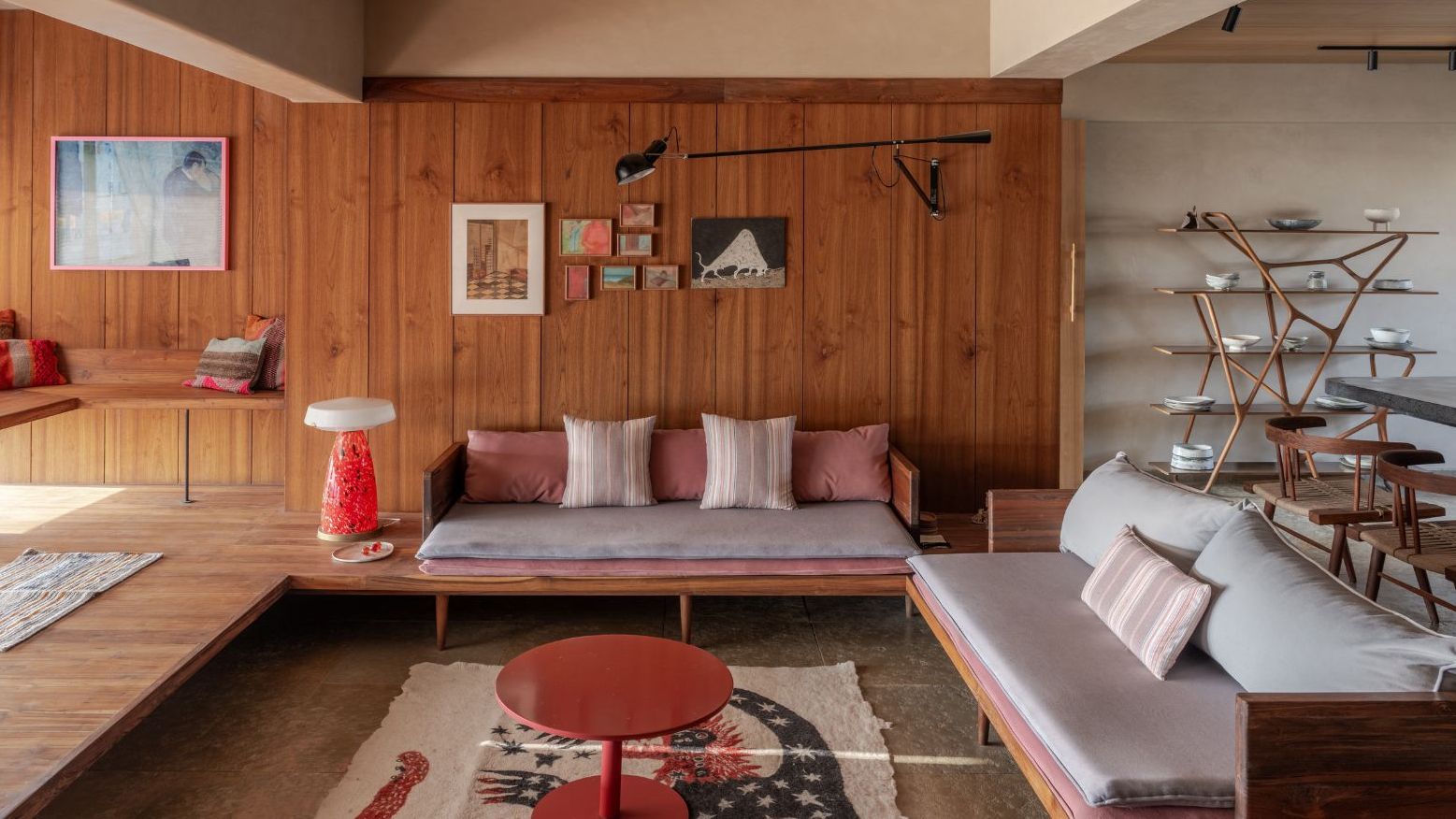“The design intent for this Mumbai home was clear: craft a space that feels personal, curated, and rich with character, steering away from the sterile perfection of hotel-like interiors,” explain Nikita D'Silva and Siddhant Tikkoo, the principal architects of the project. The client, Shirsha Guha Thakurta, a person entrenched in the business of storytelling as a director, was intent on having her home be a reflection of her life's story and lived experiences.
As the designers put it, “The client envisioned a home that embraced imperfections—a space that not only housed her extensive collection of art and curios but was also an experience in itself.” This was achieved by drawing from diverse sources of inspiration. The client was inclined to include elements of Japanese living inspired by wabi-sabi, owing to her many trips to the country. “We aimed to reinterpret the philosophy in a way that was more rooted in a contemporary Indian lifestyle, ensuring a balance between aesthetic rawness and functional comfort,” said the designers. The result was a home that borrowed from a little bit of everything– a space that embodied the openness of wabi-sabi with a strong blend of mid-century modern and contemporary influences.
On their first site visit, D’Silva and Tikkoo were confronted by a space that had significant structural degradation, lacked natural light, and little to no cross-ventilation. Their first priority was to open up the layout of the home and bring in a sense of connectivity between various common areas like the living room, balcony, and dining room.
The balcony was brought into the living room by incorporating the flooring of its deck into a floating platform-style seating arrangement. These spaces were further unified by the use of vertical teak wood panels. The living area is also home to an extensive collection of quirky curios and artworks, which extends to the cosy reading area opposing the U-shaped seating arrangement. The next challenge was to create a subtle distinction between the living area, passage, kitchen, and dining area without erecting physical boundaries. Here, the materiality of the adjoining areas was inverted, with wood cladding the ceilings and lime-wash paint on the walls.
An unforeseen result of demolishing the walls separating the various common areas was the awkward presence of a structural column right at the intersection of all these spaces. The designers took this as an opportunity to put their ingenuity to the test, “Rather than viewing it as a constraint, we transformed it into a defining design element.”
The cantilevered dining table extends from one side of the column, and seamlessly transitions into a kitchen island on the other side. Here again the designers cleverly bring the structure together by encasing the column, dining table, and kitchen island in the same dark, small-chip terrazzo. The terrazzo adds a sense of playfulness to the material palette of the home, while also acting as a counterbalance for the warmer tones of the teak wood, lime-wash paint, and yellow Kota flooring.
The beating heart of any home is always located in the kitchen, and that is especially true for this Mumbai home. As the designers explain, “Given her passion for cooking, the kitchen was designed to be an extension of that—fragmented yet fluid, functional yet inviting, fostering both culinary creativity and social interaction.” Cooking is a central activity in Shirsha Guha Thakurta's daily life, a fact that is immortalised by the inclusion of a special tile in the kitchen that depicts a heart, “Given that the open kitchen, fragmented counters, and dining table form the true heart of the home, this artwork felt like a natural extension of her lifestyle,” the designers postulate.
What the client wanted more than anything, was to have a sanctuary that told her story. Now, the home narrates the story of embracing imperfections, appreciating art, and enjoying the small moments of life with loved ones.
Also read: AD Small Spaces: A Mumbai home with transformational multifunctional furniture
Also read: A sinuous brick wall flows through this 11,000-square-foot Mumbai apartment

